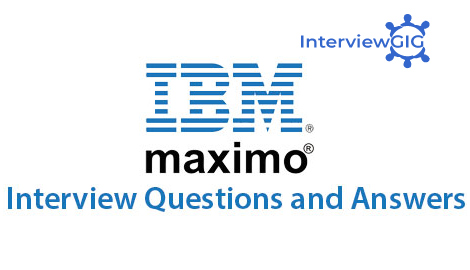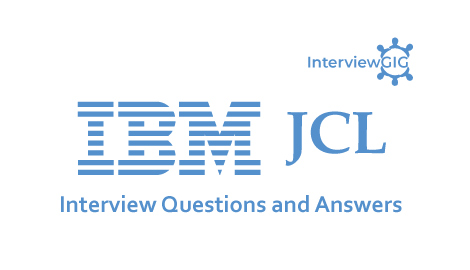What Is VSAM?
Virtual Storage Access Method It’s a Data Management method used to organize, store, catalog, retrieve and delete the datasets in mainframe system (VSAM and Non-VSAM). This access method makes it easier for an application to execute an I/O operation (moving data between an I/O device and memory). In fact, VSAM is the first access method designed for Virtual Storage Environment.
What are the advantages of VSAM?
- Accessing the data is faster and easier.
- VSAM supports more dataset types.
- Supports variety of I/O Techniques.
- Improves Efficiency.
- Records can be accessed sequentially or randomly.
What are the disadvantages of VSAM?
- VSAM Datasets require more storage space compared to other type of datasets due to Control information(CI) present in them.
- VSAM can’t be stored in TAPE Volume i.e., VSAM Stored only in DASD.
- VSAM is not a database like DB2, IMS DB & IDMS.
What is purpose of VSAM?
VSAM acts as an interface between Application program & Operating System.
What is the maximum record length for the VSAM Dataset?
Max size of a record in VSAM is cylinder = 2880 bytes approx.
What is the length of a RDF?
What is the length of a CIDF?
What are the different types of VSAM files available?
ESDS: Entry Sequence Data Set
KSDS: Key Sequence Data Set
RRDS: Relative Data Set
LDS: Linear Data Set
What is IDCAMS?
IDCAMS is the Access Method Services program. You run the IDCAMS program and supply AMS commands thru SYSIN. (examples of AMS commands are DELETE, DEFINE, REPRO etc..).
What are the IDCAMS commands that can be used for VSAM?
To modify the information for a catalog, alternate index, cluster or a path, ALTER command is used.
- DEFINE command is used for ALTERNATEINDEX, CLUSTER or PATH.
- DELETE command is used for removing the catalog for a catalog, cluster, alternate index or path.
- LISTCAT command lists the information about the dataset.
- PRINT command prints the contents of dataset.
- REPRO command is used to copy the records from one file to another.
What is the purpose of the VERIFY function of IDCAMS?
To re-sync the end of the file information with the catalog information, the VERIFY function is used.
What is the utility program closely associated with VSAM?
IDCAMS the access method services utility is associated with VSAM.
What Is Shareopts ?
SHAREOPTS is a parameter in the DEFINE and specifies how an object can be shared among users. It is coded as SHAREOPTS(a b), where a is the cross region share option ie; how two or more jobs on a single system can share the file, while b is the cross systemshare option ie how two or more jobs on different MVSes can share the file. Usual value is (2 3).
What is meant by dirty read in VSAM?
High degree of concurrent access to VSAM files is achieved by dirty read – It is done by avoiding the complications associated with CI and CA splits – The dirty read protocol is summarized as:
The VSAM file mandatorily be defined with cross-region SHARE POINTS 4.
The file allocation must be with DISP=SHR – ENQ must be followed for all operations of the files, for data set – Data set name is specified for ENQ name – Any string can be used for the ENQ gname – The user’s buffer must be refreshed with GET request, after obtaining a lock – No lock is held during a wait – DEQ function should be called at the end of all the file operations of enqueue.
What happens when you open an empty VSAM file in a COBOL program for input?
A VSAM file that has never contained a record is treated as unavailable. Attempting to open for input will fail. An empty file can be opened for output only. When you open for output, COBOL will write a dummy record to the file & then delete it out.
What is Upgrade and Noupgrade option in Alternate Index?
UPGRADE specifies that the alternate index should be modified if the base cluster is modified and NOUPGRADE specifies that the alternate indexes should be left alone if the base cluster is modified.
What is a control interval?
A control interval is the unit of information that VSAM transfers between virtual and auxiliary storage.
What is a control area?
A group of control intervals makes up a control area.
What is the Difference between VSAM and Database Tables?
VSAM file cannot run SQL queries. -VSAM lacks any kind of relation -VIEWS and SYNONYMS cannot be defined on VSAM files -RDBMS concepts cannot be applied in VSAM files.
SQL queries can be run in database table – Data fetching is more efficient than VSAM files – RDBMS concepts are applicable in DB2 database – ALIAS VIEWS can be defined on tables for sharing customized data.
What is a cluster?
A cluster is the combination of the index, sequence set and data portions of the dataset. The operating system gives program access to the cluster, that is to all parts of the dataset simultaneously.
What is a base cluste?
The Index and data components of a KSDS.
What are Sub-allocated Clusters?
A sub-allocated VSAM file shares the VSAM space with other sub-allocated files. It specifies that file should be sub-allocated within existing VSAM space. Sub-allocation is used for easier management and control of VSAM spaces.
How are records stored in an ESDS?
Records are stored in the order in which they are included in the file.
What is free space?
Free space is reserved within the data component of a KSDS to accommodate insertion of new records
How do you convert flat files to VSAM files?
Flat files are converted into VSAM files by following process:
- Identify the primary key, when the whole record can be primary key.
- Alternate key can also be used, if needed.
- File is to be sorted by primary key or the whole record.
- Utilize the SORT statement for dropping duplicates.
- A JCL command (IDCAMS – Define Cluster) need to be submitted by using the result of sorting mechanism (mentioned above) as input
- Use the command IDCAMS REPRO for loading the flat file into the VSAM file.
What are the different dataset organizations used in VSAM?
Sequential:
- In this the access method is sequential that means the accessing of the data can be done sequentially.
- The data can be added from one side and removed also from one side in a sequential manner.
Indexed:
- vIn this the entries are indexed and according to the indexing only the accessing will be made available to the datasets that are used in the organization of VSAM.
- The indexed consists of keys that are used to uniquely identify the data that are provided for the use.
Direct-access:
- In this the data can be accessed in a direct way or it can be said that there is no restriction on how the data can be retrieved.
- Any data can be called anytime and used.
What is the function of Linear dataset in VSAM?
Linear dataset consists of byte-addressable strings that are used in the virtual storage. VSAM dataset is used to have control interval of the size 4096 bytes. There are no boundaries i.e. The embdded control information is not looked in the logical records that can be locked or unlocked for the application program. The program that don’t exist are from VSAM. The linear dataset consists of data component only. It is used to store the data set in linear fashion that allows the record to be submitted before taking a copy of it.
What is a path?
A path is a file that allows you to access a file by alternate index – the path provides an association between the AIX and the base cluster.
What is the upgrade set?
The upgrade set is the list of all AIXes that VSAM must maintain for a specific base cluster, so that when data in the base cluster is updated, the AIX files are also updated.
What is a VSAM split?
If there isn’t enough space in the control interval VSAM performs a control interval split by moving some records to the free control intervals. If there isn’t a free control interval VSAM performs a control area split by allocating a new control area and moving half of the control intervals to it.
What is the VSAM-code field?
It is a COBOL II enhancement to VSAM batch processing expanding the FILE STATUS field. It is defined in WORKING-STORAGE as a six-byte group item with three two-byte elements, the normal return code, the function code and the feedback code.
What is a VSAM slot?
A relative record dataset (RRDS) consists of a specified number of areas called slots. Each slot is identified by a relative record number (RRN) which indicates its relative position in the file.
What is File Status in VSAM?
The FILE STATUS clause of the FILE-CONTROL paragraph allows for each file to be associated with a file status key. If the FILE STATUS clause is specified for a given file, a value indicating the status of each I/O operation against that file is placed in the associated file status key. This value is stored in the file status key as soon as the I/O operation is completed.
What's a LDS (Linear Data Set) and what's it used for?
LDS is a VSAM dataset in name only. It has unstructured 4k (4096 bytes) fixed size CI’s which do not contain control fields and therefore from VSAM’s standpoint they do not contain any logical records. There is no free space, and no access from COBOL. Can be accessed by DB2 and IMS fast path datasets. LDS is essentially a table of data maintained on disk. The ‘table entries’ must be created via a user program and can only be logically accessed via a user program. When passed, the entire LDS must be mapped into storage, and then data is accessed via base and displacement type processing.
Here are some scenario-based VSAM (Virtual Storage Access Method) interview questions along with their answers:
How would you retrieve a specific record from a VSAM file based on a given key?
In VSAM, you can use the READ statement with the KEY option to retrieve a specific record based on a given key. The KEY option allows you to specify the key value to be searched, and the READ statement fetches the corresponding record from the VSAM file.
Suppose you need to update multiple records in a VSAM file atomically. How would you ensure data integrity during the update process?
VSAM supports batch update operations within a single unit of work using the STARTBR and ENDBR statements. By initiating a browse operation with STARTBR, you can position the file cursor at the desired starting point. Then, you can use READNEXT and WRITE statements to sequentially retrieve and update records. Finally, the ENDBR statement completes the update operation atomically.
How can you efficiently retrieve a range of records from a large VSAM file?
To efficiently retrieve a range of records from a large VSAM file, you can use the START statement with the KEY option to position the file cursor at the starting key value. Then, you can use READNEXT statements to sequentially read records until the desired range is retrieved. By using appropriate key ranges, you can minimize the number of I/O operations and improve retrieval efficiency.
How would you handle duplicate records in a VSAM file during insertion?
VSAM provides options for handling duplicate records during insertion:
Using the UNIQUE option: You can specify the UNIQUE option in the DEFINE CLUSTER statement to enforce uniqueness of key values. If a duplicate record is encountered during insertion, an error condition is raised.
Using the NO DUPLICATES option: By specifying the NO DUPLICATES option in the DEFINE CLUSTER statement, VSAM automatically eliminates duplicate records during insertion.
How can you efficiently process a large VSAM file with millions of records?
To efficiently process a large VSAM file with millions of records, you can consider the following techniques:
- Utilize appropriate key sequences to enable sorted retrieval and minimize I/O operations.
- Use buffering techniques like VSAM buffer pools to reduce disk I/O.
- Implement selective processing by defining key ranges or using indexed access to access specific portions of the file.
- Optimize program logic to minimize unnecessary processing and maximize efficiency.
How would you handle the deletion of a record from a VSAM file that is referenced by other records?
VSAM does not provide built-in referential integrity enforcement. Therefore, when deleting a record from a VSAM file that is referenced by other records, it is the programmer’s responsibility to handle the integrity manually. This may involve updating the referencing records or maintaining relationships between records to ensure data consistency.
How can you recover a VSAM file after an abnormal termination or system failure?
VSAM provides recovery mechanisms like Backup and Restore processes. To recover a VSAM file after an abnormal termination or system failure, you can restore the backup copy of the file and apply any outstanding updates or changes from the journal or log files. The process may involve using utilities such as IDCAMS or specialized recovery tools provided by the system.





